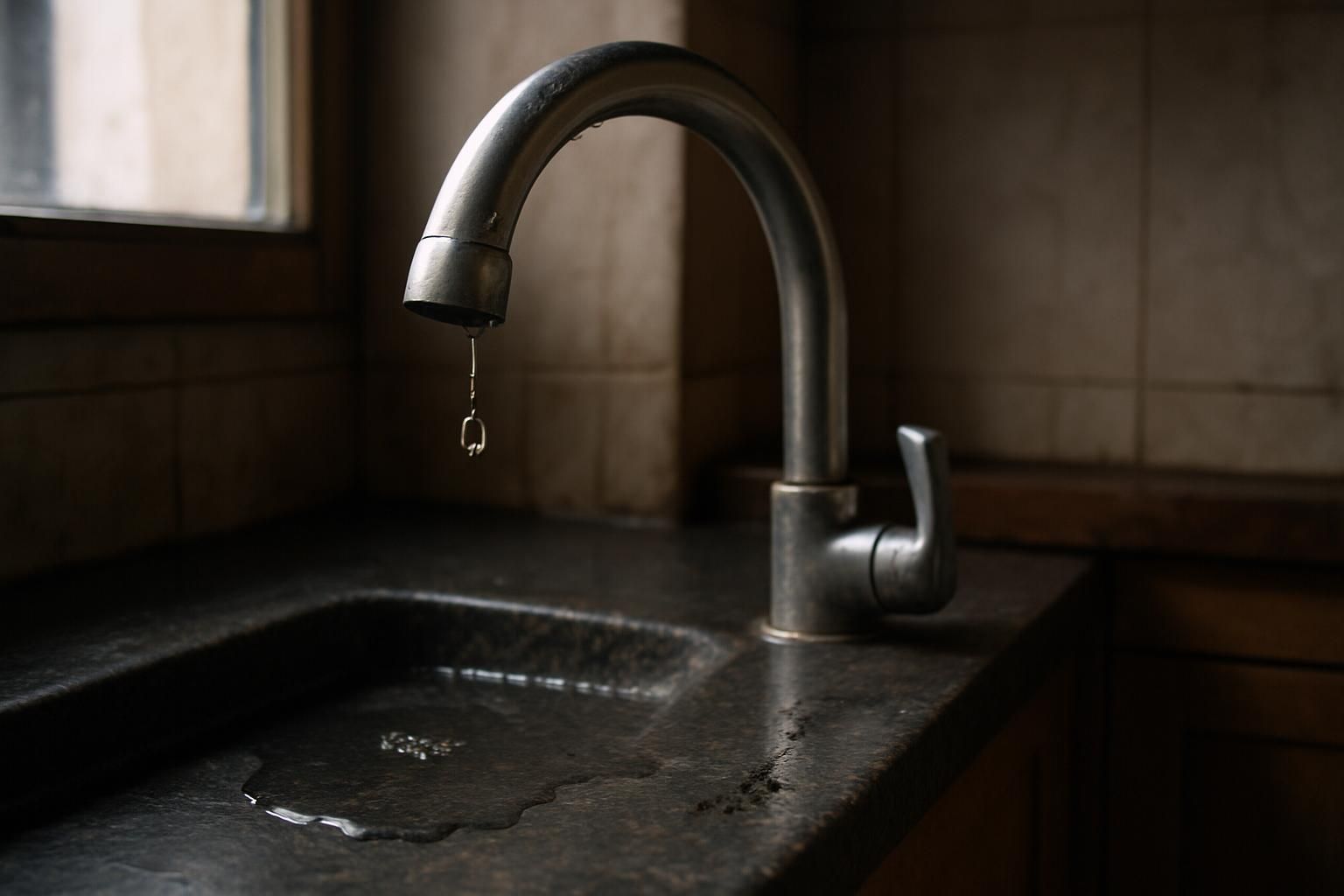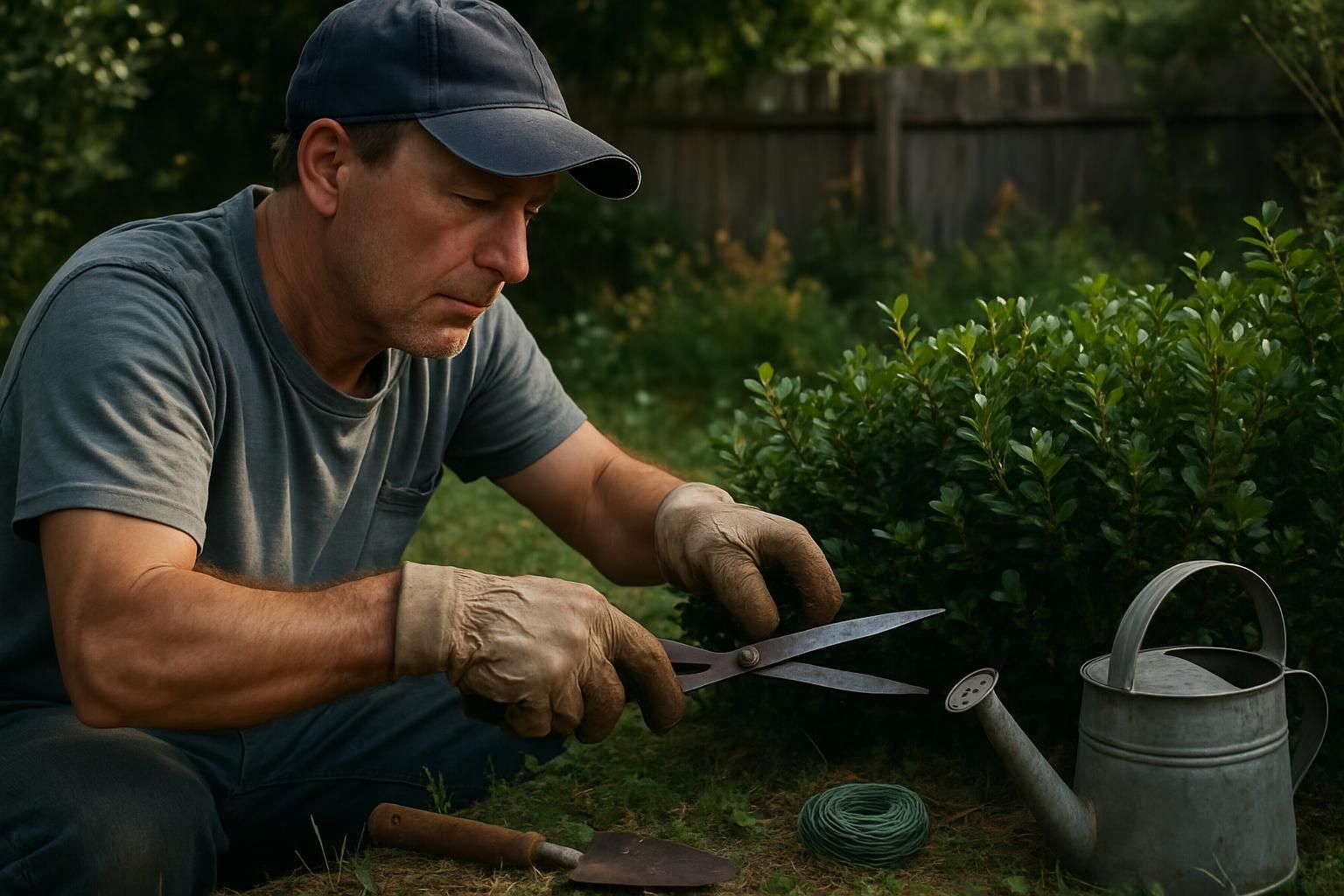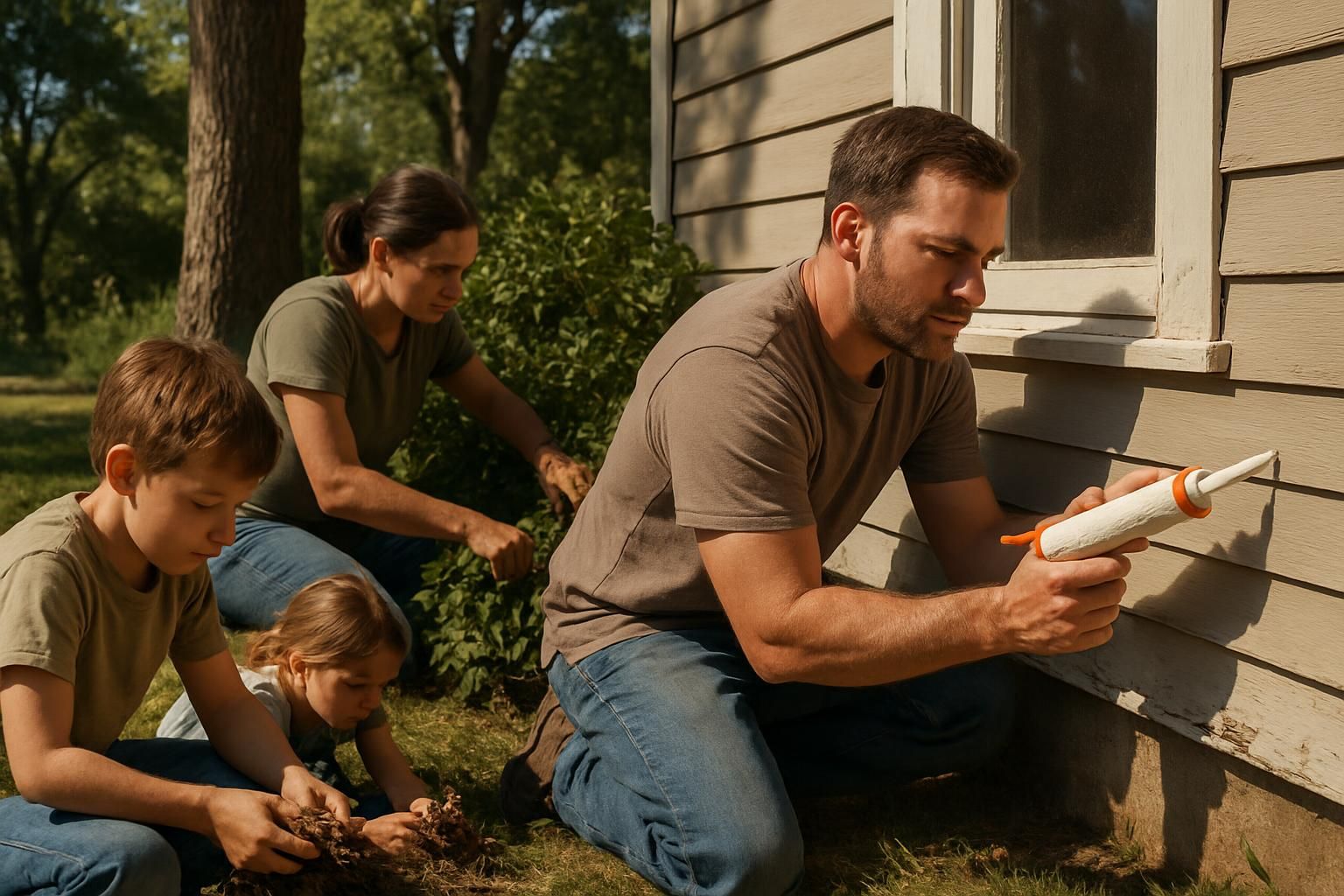No one likes sharing their home with unwanted bugs, especially as summer turns up the heat. We have here cleaning tips to avoid pest in the heat, specially during summer. Ants marching into kitchens, cockroaches hiding in dark corners, spiders spinning webs in basements these annoyances can quickly take over a clean house.
As temperatures rise and humidity sets in, pests arrive seeking food and shelter.
In fact, more than 80% of American homeowners deal with ants invading their houses each year. Fortunately, effective prevention doesn’t need expensive solutions or harsh chemicals just some practical Cleaning Tips To Avoid Pest problems in any household.
This article offers simple ways to keep homes pest-free through easy cleaning practices anyone can handle. Read on to reclaim your space and a clean house and pest free.
Key Takeaways
- Over 80% of American homeowners experience ant invasions annually; regular cleaning stops pests by removing leftover food, spills, and hidden moisture sources.
- Quickly addressing leaks matters because even small drips attract ants, mosquitoes, and roachesârepair faucets promptly and empty standing water indoors and outdoors twice weekly.
- Proper garbage management helps cut pest problems: take kitchen trash out every one or two days in hot weather, thoroughly clean bins each week with warm soapy water or vinegar solution, then disinfect to remove odors and germs.
- Regular vacuuming carpets (daily if pets or children are present) removes insect eggs and allergens. Sweeping floors daily plus mopping at least twice weekly eliminates crumbs that invite unwanted insects like cockroaches into kitchens.
- Homeowners must seal cracks around windows, doors, foundations using caulk or weather stripping yearly; this prevents bugs from entering homes easily during summer months when pests seek shelter indoors.
Note: Consider turning these key points into a simple checklist for home sanitation, bug avoidance, and household organization. Have you reviewed which cleaning hacks and insect control tips fit your home best?
Importance of Cleaning to Prevent Pests

A clean living environment reduces health hazards and keeps pesky insects away. Over 80% of American homeowners deal with ant problems, but regular cleaning helps prevent pest infestations.
Spring cleaning provides families the chance to freshen their homes and wipe out hidden places where pests love to hide.
Household cleanliness also protects property from costly structural damage caused by bugs or rodents chewing wires or woodwork. Practicing good sanitation measures means fewer visits from spiders, ants, cockroaches, or miceâand healthier indoor spaces children can safely enjoy.
A careful approach toward home maintenance promotes effective pest management year-round.
Addressing Moisture and Standing Water

Standing water and damp spaces are invitations pests can’t refuse. Dry homes keep bugs away, so don’t give pests a summer hangout spot.
Fix leaky pipes and faucets

Leaky pipes and faucets attract pests by creating moisture. Fixing leaks promptly creates a dry environment less inviting to unwanted guests.
- Check sinks, bathtubs, toilets, and laundry room fixtures at least once per month for signs of leaks or drips.
- Repair leaking pipes or faucets as soon as possible since even small drips create puddles that attract insects like ants, roaches, and mosquitoes.
- Homeowners can often fix minor faucet drips by replacing old washers or tightening fittings to stop water waste and pest problems.
- For hidden pipe leaks behind walls or cabinets, calling a professional plumber is smart to prevent damage from getting worse over time.
- Regularly inspect appliances such as dishwashers, washing machines, and refrigerators for signs of water leaks around connections or hoses; promptly repair appliance leaks when found.
- After completing plumbing repairs, thoroughly dry all areas affected by prior moisture to minimize mold growth and eliminate conditions desirable to household pests.
- Teach older children about noticing leaks early so they can alert adults quickly if water pooling occurs under sinks or near fixtures.
- Tackling plumbing issues right away helps preserve a home’s structure while eliminating standing water that draws pests indoors.
- A dripping faucet wastes roughly 3 gallons of water daily; stopping these drips saves money on utility bills besides protecting families from pest invasions.
- Inspect exterior hose bibs seasonally because outdoor plumbing problems cause puddles near home foundations attracting mosquitoes in warm weather periods such as summer months.
- Installing leak-detection sensors under sinks or near washing machine connections alerts homeowners immediately if unexpected moisture appears indoors due to slow plumbing problems or pipe deterioration over time.
Remove standing water indoors and outdoors
Standing water attracts pests quickly in hot weather. Keeping homes free of pooled water helps families avoid nasty pests and harmful insects.
- Regularly empty birdbaths at least twice a week to eliminate stagnant water, which mosquitoes love for laying eggs.
- Walk around the yard once a week after rainstorms to clear standing water from kids’ toys, buckets, flower pots, and garden tools.
- Inspect gutters every month, especially after heavy rains; clogged gutters cause moisture buildup and invite bugs or rodents.
- Check downspouts frequently so that draining water does not accumulate near home foundations.
- Dry shower floors thoroughly after use to prevent excess indoor moisture that attracts roaches or silverfish.
- Fix dripping faucets and pipes within 48 hours since pest insects like ants seek moisture from these leaks in kitchens and bathrooms.
- Quickly clean spilled liquids or leaked water around appliances such as washers, dishwashers, refrigerators, and air conditioning units to stop attracting pests indoors.
- Regularly mop basement floors and utility areas where wetness builds up easily to keep spaces dry and pest-free.
- After watering garden beds, be sure pools of extra water drain properly since pooling liquids draw bugs close to house walls.
- Frequently lift plant saucers on decks or balconies after rain showers because hidden puddles beneath potted plants provide perfect breeding spots for mosquitoes or gnats.
- Turn wheelbarrows upside down outdoors after use; even small amounts of collected rainwater attract insects quickly during summer heat waves.
- Carefully store outdoor equipment upright in sheds or garages rather than leaving items outside where they fill with rainfall; this keeps hidden water pockets away from pest access points at home entryways.
Proper Waste Management

Trash can be a pest magnet in hot weather, so managing waste the right way makes a big difference. Homeowners who handle garbage smartly cut down their risk of inviting unwanted critters indoors.
Take out the trash frequently
Taking out garbage frequently limits pests’ access to food sources in homes. Homeowners should take out kitchen garbage bags every one or two days in hot weather. Proper waste disposal involves securely covering garbage bins and keeping them tightly sealed.
Flies and ants get attracted by leftovers, fruit scraps, and other food wastes left lingering indoors.
Clean and disinfect trash bins regularly
Dirty trash bins are magnets for pests. Food residue and odors attract bugs, rodents, and critters looking for an easy meal. Homeowners should clean garbage bins once a week with warm water mixed with dish soap or vinegar.
After cleaning the refuse containers thoroughly, disinfect them using diluted bleach or commercial sanitizing spray to remove germs fully. Close dumpster lids securely to prevent pests from diving into household waste overnight and creating a sanitation nightmare outside your door.
Regular rubbish removal and proper solid waste management help families maintain environmental cleanliness at home while keeping unwanted visitors away.
Eliminate Food Sources

Pests crash summer parties when food stays out too long. Keeping kitchens tidy helps homeowners stop bugs before they start learn how to pest-proof your pantry here!
Store food in airtight containers
Storing food in airtight containers prevents pests from snacking on family groceries. Sealed containers keep cereals, grains, and snacks insect-free and fresh for longer periods. Leftovers stored in tightly covered containers can block odors that attract unwanted insects.
Using secure lids stops pesky ants or roaches from getting easy meals inside cupboards or pantries. Investing in insect proof containers creates one less headache for homeowners managing kitchens during warmer months.
Avoid leaving dirty dishes in the sink
Dirty dishes left in the sink attract pests like a magnet. Unwashed plates and bowls, with bits of leftover food, create ideal feeding grounds for ants, roaches, flies, and rodents.
Washing dishes right away keeps kitchen hygiene high and reduces pest risk significantly. A quick rinse or short wash after a meal is simple enough even on busy days. This habit takes only minutes each time but helps greatly in preventing infestations.
Keeping the sink cleared also makes cleaning counters easier. With no dirty silverware or cups blocking their path, homeowners can quickly wipe down surfaces to remove all food debris effectively.
Sanitizing surfaces regularly removes odors that might otherwise invite unwanted guests into homes and kitchens alike. Good dish washing practices make proper food storage methods more effective at eliminating household pests permanently.
Next comes another common issue: leaving pet food out overnight the perfect recipe for trouble!
Do not leave pet food out overnight
Leaving dirty dishes in the sink attracts pests, but many homeowners forget about pet meals. Pet food left out overnight creates an irresistible feast for insects and rodents looking for easy eats.
Homeowners should store pet food in sealed containers to prevent pest attraction. Cleaning up promptly after pets finish meals also helps reduce the risk of pests invading homes.
Proper pet feeding practices such as regular cleaning of bowls and secure pet food storage can make a big difference in keeping homes free from pesky invaders.
Maintain a Clean Home Environment

A clean home makes pests feel unwelcome curious how to keep your place spotless and critter-free?
Vacuum carpets and rugs regularly
Regular vacuuming keeps carpets and rugs clean. It also significantly lowers the risk of pests hiding in the home.
- Homeowners who regularly vacuum can remove dirt, dust, dried food crumbs, and insect eggs hidden in carpets.
- Vacuum cleaners with HEPA filters trap fine particles and allergens that attract pests.
- Carpets in basements, attics, laundry rooms, and garages need special attention since pests often hide there.
- Households with pets or young children should vacuum carpets daily because these families track more dirt inside.
- Rotating furniture every few weeks helps individuals reach under sofas and chairs to remove hidden dirt patches.
- Deep carpet cleaning every three months eliminates smells and debris that routine vacuuming might miss.
- Rugs near entries require additional weekly vacuum sessions to prevent outdoor dirt from attracting bugs indoors.
- Frequently emptying vacuum bags prevents insect eggs from hatching or spreading back into living spaces.
Keeping floors clean is one smart step leading homeowners directly into decluttering their indoor spaces effectively.
Sweep and mop floors frequently
Besides vacuuming carpets and rugs, cleaning hard floors protects homes from pests. Food crumbs often collect on tile and hardwood surfaces, attracting unwanted insects.
- Sweep floors daily to keep dirt and leftover food from attracting ants or cockroaches.
- Mop floors at least twice a week with warm water mixed with mild disinfectant to remove germs and pest-attracting residues.
- Pay extra attention to kitchen cleanliness by sweeping thoroughly under appliances like ovens, fridges, and dishwashers where crumbs hide easily.
- Homeowners should quickly clean spilled drinks or dropped foods since sugary liquids can draw pests within just a few hours.
- Parents can protect children by regularly mopping play areas, removing sticky messes that attract crawling bugs looking for snacks.
- Better household tidiness happens if adults set clear routines of daily sweeping after meals and frequent mopping every couple of days.
- Using disposable mop pads helps in easy dirt removal without spreading dirty mop water around the floors again.
- Quickly drying wet areas after floor maintenance keeps moisture down, making rooms less inviting for pests seeking humidity.
- Sweeping entryways daily helps stop dirt or tiny bugs at the door before they spread into other living spaces inside the home.
- Housekeeping practices like wiping surfaces clean after sweeping floors prevents leftover dust layering up over time, causing hidden pest habitats beneath cabinets or furniture corners.
Wipe down kitchen surfaces to remove food residue
Clean kitchen surfaces help homeowners keep pests far away. Sticky spills, sugary residues, and crumbs left on countertops act like a welcome mat for ants, roaches, and other unwanted guests.
By wiping down food prep areas regularly with disinfectant cleaner, parents can eliminate tempting food buildup before it attracts pests.
Food stains that sit overnight become stubborn and harder to remove the next day. Cleaning countertops after each meal prevents this problem from developing into an annoying chore later on.
Disinfecting kitchen areas daily cuts down risks of infestation and makes maintaining a tidy kitchen simpler overall.
Declutter and Organize

Pests adore hiding in piles of stuff, so cut down their cozy corners. An organized spot leaves pests nowhere to nest clean home wins every time!
Remove unnecessary clutter from living spaces
Clutter invites pests, especially during hot summer months. A tidy home keeps bugs and rodents away and creates a relaxing atmosphere.
- Homeowners must declutter and organize rooms often to cut down hiding spots for pests.
- Removing stacks of old magazines, newspapers, or cardboard boxes is important, as these items attract insects.
- Plastic storage bins are better than cardboard boxes since pests like cockroaches prefer chewing through cardboard.
- Streamlining living spaces by getting rid of unused furniture provides fewer shelters for rats and mice to nest.
- Cleaning out closets regularly helps homeowners spot signs of insect activity early.
- Keeping children’s toys neatly stacked in clean bins reduces places for spiders and ants to hide.
- Arranging pantry shelves neatly with airtight containers lowers the risk of attracting pantry moths and beetles that love crumbs or spilled foods.
- Cleaning surfaces thoroughly after decluttering removes dirt particles that can draw cockroaches or flies indoors during hot days.
- Frequent vacuuming helps homeowners pick up stray crumbs, dust mites, flea eggs, and other small particles that attract bugs into carpets and rugs.
- Getting rid of excess clutter also allows parents easier visual checks in areas kids frequently use, keeping young ones safe from hidden insects or hazards in busy play zones.
Keep storage areas clean and tidy
- Regularly tidying storage areas removes potential pest hiding spots and shelters.
- Clear away old boxes and junk that pests could nest inside; cardboard attracts unwanted visitors like roaches and silverfish.
- Storing belongings in clean plastic containers instead of cardboard prevents pest infestations.
- Neat and tidy storage spaces make spotting pest activity easier, letting homeowners respond quickly to signs of trouble.
- Organized storage containers with secure lids discourage rodents from nesting among stored items such as clothing, toys, or pet supplies.
- Dusting shelves and flooring weekly reduces dirt buildup that can attract insects into storage areas.
- Cleaning spills immediately is important since sticky residues invite ants searching for food sources around clutter-free storage spaces.
- Keeping items off the floor on shelves or racks limits hiding opportunities for pests such as mice looking for safe nesting locations indoors.
- Checking stored items every one to two months helps identify early signs of infestation before problems spread throughout the home.
- Pest-free storage areas protect valuable family keepsakes, seasonal decorations, kids’ toys, sports equipment, or extra food supplies commonly housed in garages and basements.
Seal Potential Entry Points

Small gaps in the walls are like welcome mats for pests; sealing them shuts the door firmly. A bit of caulk here and weather stripping there, and homeowners can keep unwanted critters on their own side of the fence.
Inspect for cracks and crevices in walls, windows, and doors
- Examine all walls carefully both indoors and outdoors to locate potential entryways for insects or rodents.
- Check window frames regularly since gaps sometimes appear as wood ages or paint wears away.
- Look at door frames too; spaces underneath and around doors can become easy entrances for pests.
- Pay special attention to areas near pipes or wiring because holes here offer smooth routes inside.
- Use caulk or weather stripping effectively to block off cracks in windows, doors, and wall joints immediately after detection.
- Search thoroughly behind appliances, cabinets, shelves, closets, basements, garages, attics, laundry rooms, and storage areas for unnoticed vulnerabilities.
- Fill gaps larger than a quarter-inch with expandable foam products made specifically to keep bugs and rodents out.
- Check screens on all windows every month during warm seasons to spot tears or holes quickly.
- Verify the condition of vents leading outside; damaged vent covers invite unwanted visitors indoors easily.
- Inspect foundations carefully; tiny fissures close to ground level let ants or termites enter undetected until infestation spreads widely through homes.
Use caulk or weather stripping to seal gaps
- Caulk is a simple option to close small spaces around window frames or door edges where insects enter.
- Weather stripping prevents drafts and works well around doors that open frequently.
- A good-quality sealant fills gaps securely and dries quickly for effective pest control and home insulation.
- Filling gaps does double duty by preventing pest entry as well as keeping cool air in the home during heatwaves.
- Regular checks of seals ensure strong barrier protection and reduce home maintenance costs over time.
- Gap filling also helps reduce energy bills because buildings stay cooler longer without losing cool air.
- Homeowners save money by applying weatherproofing materials themselves instead of hiring professional services every time.
- Barrier installation at potential insect entries reduces the need for frequent chemical sprays inside the house.
- Insulation improvements from sealing gaps make indoor temperatures more comfortable on very hot days.
- Households with children benefit most from properly fitted seals since pests often pose health risks like allergies or bites.
- Choosing flexible weather stripping makes opening and closing doors smoother while keeping pests outside effectively.
- Applying new caulk each year keeps surfaces secure as older layers might loosen due to temperature changes or moisture exposure over time.
Outdoor Maintenance Tips

Keeping your yard tidy helps keep pests from moving in rent-free. A neat outdoor space can save homeowners headaches; discover more easy tips to keep critters away this summer.
Trim vegetation near the home
Trimming shrubs and bushes near the house cuts down on pest habitats. Overgrown greenery gives pests hiding spots to nest and thrive. Homeowners who prune vegetation around their houses reduce insects like ants, spiders, and ticks from moving indoors.
Shorter plants along walls or under windows offer fewer pathways into homes. Regular yard upkeep including tree trimming close to roofs stops pests from entering attics too. A neat garden not only looks great but discourages rodents searching for shelter spots nearby.
Keep outdoor trash bins tightly sealed
Homeowners often overlook outdoor waste management, but poorly managed trash draws pests like a magnet. Loose lids or open containers invite rodents, insects, and even unwelcome wildlife guests for an easy meal.
Securing dumpster lids tightly keeps odors contained and stops curious critters from exploring household garbage.
Proper garbage disposal helps families maintain outdoor cleanliness while preventing pest problems at home. A secured lid is a simple yet vital part of litter management and reduces the need for costly rodent control solutions later on.
Regularly checking bins to stay sealed tight naturally supports wildlife deterrence and simplifies yard work overall. Next up are helpful guidelines about protecting pets from harmful pests outside the home.
Protecting Pets from Pests

Pets can bring pests home faster than kids track in mud after a rainstorm. Keeping furry friends pest-free is easier and cheaper than dealing with an infestation later, so don’t miss these quick tips to protect them.
Keep pet bedding clean
Dirty pet bedding attracts fleas, ticks, and pests that can cause illness in pets and family members. Regular washing of pet bedding prevents pest infestations and protects pet health by removing parasite eggs or larvae hidden among fabrics.
Homeowners should sanitize areas where their furry friends sleep at least once a week using hot water to kill fleas, ticks, and germs effectively.
Homeowners can create simple cleaning routines like vacuuming around sleeping spots to remove hair or dirt. Bedding maintenance combined with vet-approved flea treatments will help maintain a safe environment for both pets and children alike.
Keeping these spaces clean is the first line of defense against harmful parasites entering the family home through animals they love dearly.
Use vet-approved pest prevention products
Pet parasite prevention starts with vet-approved pest control for pets. Homeowners and parents need safe ways to protect their furry companions from fleas, ticks, and other pests.
Choosing flea and tick medications or collars recommended by veterinarians helps keep animals healthy and comfortable, especially in hot months when parasites thrive.
Consulting a trusted veterinarian guarantees the use of pet-friendly pest prevention products effective for your pet’s breed, size, age, and health status. Carefully following treatment directions on packages enhances protection against nasty bugs without harming beloved four-legged family members.
Regularly cleaning pet beds also boosts parasite protection for pets at home.
Regular Inspections and Pest Control

Spotting pests early saves money and stress later. Homeowners who stay ahead usually sleep better at night without uninvited guests crawling around.
Conduct routine home inspections for pests
- Annual inspections work best to spot common household pests like ants, roaches, or rodents.
- Homeowners should closely examine basements, as small insects often hide in damp corners.
- Attics attract spiders and bugs because of dark and quiet conditions; inspect them carefully once per year.
- Garages hold clutter that provides cozy nests for rodents or other pests; regular checks avoid pest infestation surprises later on.
- Laundry rooms often become humid and warm, attracting silverfish or cockroaches; thorough monthly inspection prevents unwanted invasions.
- Inspect around pipes, wires, windows, and doors every season for gaps letting in pests; sealing entry points supports effective pest prevention tactics.
- Families need to look beneath sinks in kitchens and bathrooms since leaky pipes make perfect breeding spots for bugs.
- Checking closets at least twice a year helps catch hidden moths feeding on clothes fibers before damage gets serious.
- Routine yard inspections identify ant hills or wasp nests outside before these insects invade indoors looking for food or shelter.
- Make it a habit to move furniture occasionally during cleanup days; rearranging exposes hiding pests like spiders or beetles.
Consider professional pest control services if needed
If inspections show signs of pest infestations, homeowners can contact professionals like Pestech for certified pest control help. Expert pest management teams have effective treatments to manage ongoing issues and stop pests from returning.
Professional exterminators handle serious residential pest control problems safely and fast, saving families valuable time and stress. Serious infestations need expert solutions rather than home remedies or store-bought sprays.
Integrated pest management experts quickly identify hidden pests in homes before the problem grows out of hand.
Conclusion

Keeping pests out starts with simple cleaning habits. Regular cleanup, proper storage, and sealing gaps around homes help families enjoy pest-free summers. Small tasks like trimming yards or promptly fixing leaks also stop pests from settling in uninvited.
Staying ahead of bugs means healthier spaces for parents, kids, and even pets during hot weather months. Clean smarter this season; stop tiny intruders before they move inside!
Reflection: Consider how each cleaning hack, insect control method, and home sanitation practice can enhance your household cleanliness. Use these ideas to review your own routine for bug avoidance and natural cleaning solutions.
FAQs
1. Why do pests show up more often during hot weather?
Hot weather makes pests thirsty and hungry, driving them indoors to seek food and water. Keeping your home clean removes their easy meals and discourages unwanted visitors.
2. How can regular kitchen cleaning help prevent pest problems in summer?
Pests love crumbs, spills, and leftover food bits on counters or floors. Regularly wiping surfaces, sweeping floors daily, and sealing trash tightly cuts off their buffet line.
3. Does clutter really attract pests when temperatures rise?
Absolutelyâclutter gives bugs cozy hiding spots from the heat outside. Clearing piles of paper or boxes reduces shelter options for these sneaky critters.
4. Can simple yard maintenance lower my home’s risk of pest invasion during warm months?
Definitely! Trimming bushes near windows or doors prevents insects from using branches as bridges into your house. Keep grass short too; tall grass is like a welcome mat for pesky guests looking to cool down inside your place.






